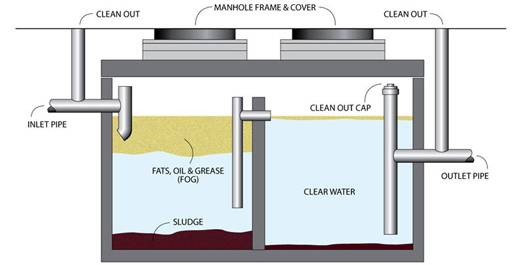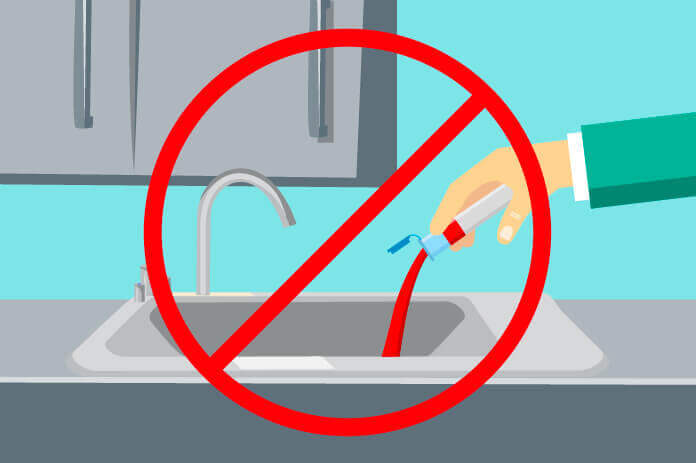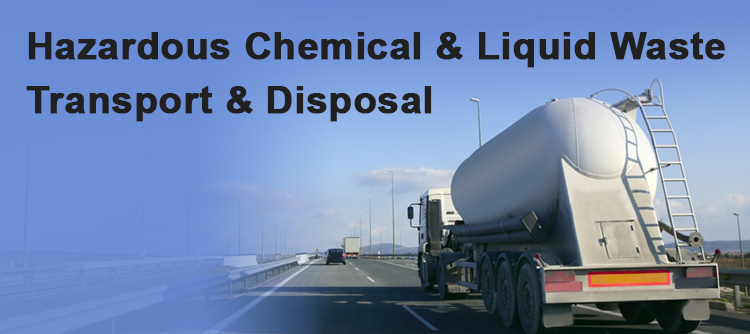How Liquid Garbage Disposal Works: A Comprehensive Review of Strategies and Technologies Utilized

Overview of Liquid Waste Types
The complexity of liquid waste types demands a complete understanding of their features and ramifications for disposal. Liquid waste can extensively be categorized right into numerous kinds, consisting of industrial, community, farming, and contaminated materials. Each classification exhibits unique properties, calling for particular monitoring techniques to reduce ecological and health threats.
Industrial liquid waste stems from manufacturing processes and usually contains an array of pollutants, such as heavy steels, solvents, and natural substances. Local liquid waste, primarily consisting of wastewater from homes and industrial facilities, includes organic matter, nutrients, and microorganisms (industrial wastewater treatment). Agricultural liquid waste, consisting of overflow from farms, might have fertilizers, pesticides, and animal waste, positioning threats to water high quality and communities
Dangerous liquid waste is identified by its poisoning, sensitivity, or potential to create injury. This category includes materials like acids, bases, and specific chemicals that demand rigorous handling and disposal methods. Comprehending these diverse fluid waste kinds is critical for developing efficient disposal methods and guaranteeing compliance with ecological guidelines. Proper classification and characterization are crucial for carrying out appropriate therapy strategies and reducing the damaging influences on public health and the setting.
Physical Therapy Methods

Screening is the first action, where larger particles and particles are gotten rid of from the fluid waste using screens or grates. In sedimentation containers, heavier fragments work out at the bottom, creating a sludge layer, while the clarified liquid can be more dealt with.
Purification is an additional essential approach that includes passing the liquid via permeable products, such as sand or membrane layers, to capture smaller sized fragments. This action enhances the top quality of the fluid, making it suitable for subsequent treatment processes.

Chemical Therapy Strategies
Chemical therapy techniques are vital for successfully taking care of fluid waste, especially in attending to dissolved and colloidal contaminants that physical approaches might not appropriately get rid of. These strategies make use of numerous chemical agents to counteract, speed up, or change unsafe substances into much less hazardous types.
One typical method is coagulation and flocculation, where chemicals such as alum or ferric chloride are added to advertise the gathering of suspended fragments. This procedure enhances sedimentation, permitting less complicated elimination of the resulting sludge. Furthermore, oxidation processes, using representatives like chlorine or ozone, are used to damage down complex natural compounds and microorganisms, making the waste much safer for discharge or additional treatment.
Neutralization is one more vital technique, which readjusts the pH of acidic or alkaline waste streams to neutral degrees, protecting against potential harm to industrial wastewater treatment downstream systems and the atmosphere. Moreover, progressed oxidation processes (AOPs) use mixes of oxidants and ultraviolet light to deteriorate consistent pollutants, attaining a higher degree of therapy performance.
Organic Treatment Processes
Biological treatment procedures play a critical duty in the administration of liquid waste by utilizing bacteria to decompose raw material and lower pollutant degrees. These procedures can be broadly categorized into cardiovascular and anaerobic treatments, each utilizing particular microbial neighborhoods to accomplish efficient waste deterioration.
Cardiovascular treatment involves making use of oxygen to help with the malfunction of organic materials by bacteria. This process is commonly carried out in triggered sludge systems, where oygenation storage tanks offer a helpful environment for microbial growth, bring about the oxidation of organic contaminants. The resultant biomass can be divided from treated effluent with sedimentation.
In comparison, anaerobic treatment happens in the lack of oxygen, depending on various bacteria to break down organic issue. This technique is specifically advantageous for high-strength waste, as it produces biogas, a renewable resource resource, while lowering sludge production. Technologies such as anaerobic digesters are often utilized in commercial and local applications.
Both anaerobic and cardio organic treatments not only reduce the ecological influence of liquid waste yet also help with resource recovery, making them essential parts of lasting waste monitoring approaches. Their flexibility, performance, and performance sustain their extensive implementation throughout various fields.
Emerging Technologies in Disposal
Innovative techniques to liquid garbage disposal are swiftly developing, driven by developments in modern technology and a boosting focus on sustainability. Amongst these emerging modern technologies, membrane bioreactors (MBRs) have gained grip for their capacity to combine organic treatment with membrane filtering, causing top notch effluent that can be reused in numerous applications. MBRs allow smaller sized footprints and more effective procedures compared to conventional systems.
One more appealing development is the use of anaerobic digestion integrated with nutrient healing modern technologies, which not just deals with fluid waste but additionally generates biogas and recuperates beneficial nutrients like nitrogen and phosphorus. This dual benefit boosts resource efficiency and minimizes environmental influence.
In addition, advanced oxidation procedures (AOPs) are being adopted for the degradation of complex organic pollutants. These approaches make use of effective oxidants and drivers to break down impurities at the molecular level, offering a highly effective remedy for challenging waste streams.
Furthermore, the assimilation of man-made intelligence and machine discovering in waste management systems is enhancing functional efficiency and anticipating maintenance, leading to minimized expenses and improved environmental conformity. These technologies reflect a substantial shift in the direction of more effective and sustainable fluid garbage disposal techniques.
Verdict
In final thought, efficient fluid waste disposal demands a detailed understanding of numerous methods and modern technologies. By continuously progressing these methodologies, it ends up being possible to address the expanding obstacles linked with fluid waste, inevitably adding to environmental protection and resource recuperation.
Fluid waste disposal is a critical element of environmental management, calling for an extensive understanding of numerous methods and innovations tailored to various waste types. Liquid waste can generally be categorized right into several kinds, including commercial, local, agricultural, and dangerous waste. Agricultural fluid waste, including overflow from farms, may have plant foods, chemicals, and animal waste, presenting risks to water top quality and environments.
Different physical treatment methods play an important function in managing liquid waste efficiently - industrial wastewater treatment.In verdict, reliable liquid waste disposal demands an extensive understanding of numerous strategies and modern technologies
Comments on “Safe and Lasting Liquid Waste Disposal: Your Go-To Company”